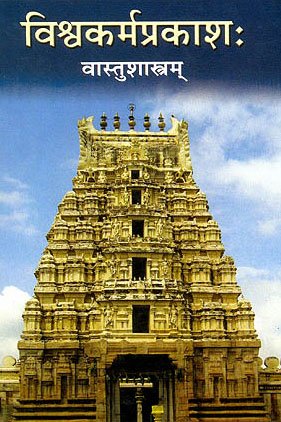Kuttima, Kuṭṭima: 13 definitions
Introduction:
Kuttima means something in Hinduism, Sanskrit, biology. If you want to know the exact meaning, history, etymology or English translation of this term then check out the descriptions on this page. Add your comment or reference to a book if you want to contribute to this summary article.
In Hinduism
Shilpashastra (iconography)
Source: Wisdom Library: Śilpa-śāstraKuttima (कुत्तिम) is a synonym for adhiṣṭhāna (‘platform’), according to the Mayamata 14.40. The word adhiṣṭhāna is Sanskrit technical term referring to the “base” or “platform” on which a structure is built.

Shilpashastra (शिल्पशास्त्र, śilpaśāstra) represents the ancient Indian science (shastra) of creative arts (shilpa) such as sculpture, iconography and painting. Closely related to Vastushastra (architecture), they often share the same literature.
Vastushastra (architecture)
Source: OpenEdition books: Architectural terms contained in Ajitāgama and RauravāgamaKuṭṭima (कुट्टिम) refers to “base (?) § 3.14.”.—(For paragraphs cf. Les enseignements architecturaux de l'Ajitāgama et du Rauravāgama by Bruno Dagens)

Vastushastra (वास्तुशास्त्र, vāstuśāstra) refers to the ancient Indian science (shastra) of architecture (vastu), dealing with topics such architecture, sculpture, town-building, fort building and various other constructions. Vastu also deals with the philosophy of the architectural relation with the cosmic universe.
Biology (plants and animals)
Source: Google Books: CRC World Dictionary (Regional names)Kuttima in India is the name of a plant defined with Punica granatum in various botanical sources. This page contains potential references in Ayurveda, modern medicine, and other folk traditions or local practices.
Example references for further research on medicinal uses or toxicity (see latin names for full list):
· Species Plantarum (1753)
· Investigatio et Studium Naturae (1992)
· Journal of Cytology and Genetics (1981)
· Ann. Cat. Vasc. Pl. W. Pakistan & Kash. (1972)
· Journal of Ethnopharmacology (2009)
· North American Flora (1928)
If you are looking for specific details regarding Kuttima, for example chemical composition, health benefits, diet and recipes, side effects, pregnancy safety, extract dosage, have a look at these references.

This sections includes definitions from the five kingdoms of living things: Animals, Plants, Fungi, Protists and Monera. It will include both the official binomial nomenclature (scientific names usually in Latin) as well as regional spellings and variants.
Languages of India and abroad
Sanskrit dictionary
Source: DDSA: The practical Sanskrit-English dictionaryKuṭṭima (कुट्टिम).—a.
1) Paved with small stones, decorated with mosaic.
-maḥ, -mam 1 An inlaid or paved floor, ground paved with small stones, pavement; कान्तेन्दुकान्तोपलकुट्टि- मेषु (kāntendukāntopalakuṭṭi- meṣu) Śiśupālavadha 3.44; R.11.9. 'निबद्धा भूः (nibaddhā bhūḥ)' Ak. निष्यन्दश्चन्दनानां शिशिरयति लतामण्डपे कुट्टिमान्तान् (niṣyandaścandanānāṃ śiśirayati latāmaṇḍape kuṭṭimāntān) Nāg.3.7.
2) Ground prepared for the site of a mansion.
3) A jewel-mine.
4) The pomegranate.
5) A hut, cottage, small house.
Source: Cologne Digital Sanskrit Dictionaries: Shabda-Sagara Sanskrit-English DictionaryKuṭṭima (कुट्टिम).—mn.
(-maḥ-maṃ) 1. A jewel mine. 2. Ground smoothed and plastered. 3. Ground prepared for the site of a mansion. 4. A hut, a cottage. 5. The pomegranate. E. kuṭṭ to cut or pierce, and imac aff.
Source: Cologne Digital Sanskrit Dictionaries: Benfey Sanskrit-English DictionaryKuṭṭima (कुट्टिम).— (cf. kuṭṭ), I. adj., f. mā, Plastered with small stones, [Rāmāyaṇa] 2, 80, 13. Ii. m. and n. A floor or ground smoothed and plastered, Mahābhārata 14, 2522; 1, 6964; [Mālavikāgnimitra, (ed. Tullberg.)] 21, [distich] 27.
Source: Cologne Digital Sanskrit Dictionaries: Cappeller Sanskrit-English DictionaryKuṭṭima (कुट्टिम).—[neuter] plaster-floor, pavement.
Source: Cologne Digital Sanskrit Dictionaries: Monier-Williams Sanskrit-English Dictionary1) Kuṭṭima (कुट्टिम):—[from kuṭṭ] mf(ā)n. plastered or inlaid with small stones or with mosaic, [cf. Lexicographers, esp. such as amarasiṃha, halāyudha, hemacandra, etc.]
2) [v.s. ...] mn. ([gana] ardharcādi) an inlaid or paved floor, pavement, ground paved with mosaic, ground smoothed and plastered, [Mahābhārata; Rāmāyaṇa] etc.
3) [v.s. ...] ground prepared for the site of a mansion, [Horace H. Wilson]
4) [v.s. ...] a cottage, [cf. Lexicographers, esp. such as amarasiṃha, halāyudha, hemacandra, etc.]
5) [v.s. ...] the pomegranate, [cf. Lexicographers, esp. such as amarasiṃha, halāyudha, hemacandra, etc.]
Source: Cologne Digital Sanskrit Dictionaries: Yates Sanskrit-English DictionaryKuṭṭima (कुट्टिम):—[(maḥ-maṃ)] 1. m. n. A jewel mine; ground cleared or plastered; a hut; a pomegranate.
Source: DDSA: Paia-sadda-mahannavo; a comprehensive Prakrit Hindi dictionary (S)Kuṭṭima (कुट्टिम) in the Sanskrit language is related to the Prakrit word: Koṭṭima.
[Sanskrit to German]
Sanskrit, also spelled संस्कृतम् (saṃskṛtam), is an ancient language of India commonly seen as the grandmother of the Indo-European language family (even English!). Closely allied with Prakrit and Pali, Sanskrit is more exhaustive in both grammar and terms and has the most extensive collection of literature in the world, greatly surpassing its sister-languages Greek and Latin.
Kannada-English dictionary
Source: Alar: Kannada-English corpusKuṭṭima (ಕುಟ್ಟಿಮ):—
1) [noun] a paved surface; a pavement.
2) [noun] a jewel mine.
3) [noun] a round fruit with a red, leathery rind and many seeds covered with red, juicy, edible flesh; a pomegranate.
4) [noun] a small, simple house with a thatched roof.
Kannada is a Dravidian language (as opposed to the Indo-European language family) mainly spoken in the southwestern region of India.
See also (Relevant definitions)
Starts with: Kuttimam, Kuttimambore, Kuttimaniyam, Kuttimari.
Ends with: Dhulikuttima, Manikuttima, Vastrakuttima.
Full-text: Vastrakuttima, Dhulikuttima, Talima, Kottima, Kuttimam, Nadvabhu, Akhotashirshaka, Manibhu, Manibhumi, Manikuttima, Katumika, Adhishthana, Ullekha, Nyasa, Kutta.
Relevant text
Search found 6 books and stories containing Kuttima, Kuṭṭima; (plurals include: Kuttimas, Kuṭṭimas). You can also click to the full overview containing English textual excerpts. Below are direct links for the most relevant articles:
Sahitya-kaumudi by Baladeva Vidyabhushana (by Gaurapada Dāsa)
Text 7.120 < [Chapter 7 - Literary Faults]
Vastu-shastra (3): House Architecture (by D. N. Shukla)
Trishashti Shalaka Purusha Caritra (by Helen M. Johnson)
Appendix 2.3: new and rare words < [Appendices]
Appendix 3.2: new and rare words < [Appendices]
Manasara (English translation) (by Prasanna Kumar Acharya)
Chapter 22 - The four-storeyed buildings (catustala or caturbhūmi)
Chapter 31 - The Courts (prākāra)
Amarakoshodghatana of Kshirasvamin (study) (by A. Yamuna Devi)
Vastu-shastra (5): Temple Architecture (by D. N. Shukla)